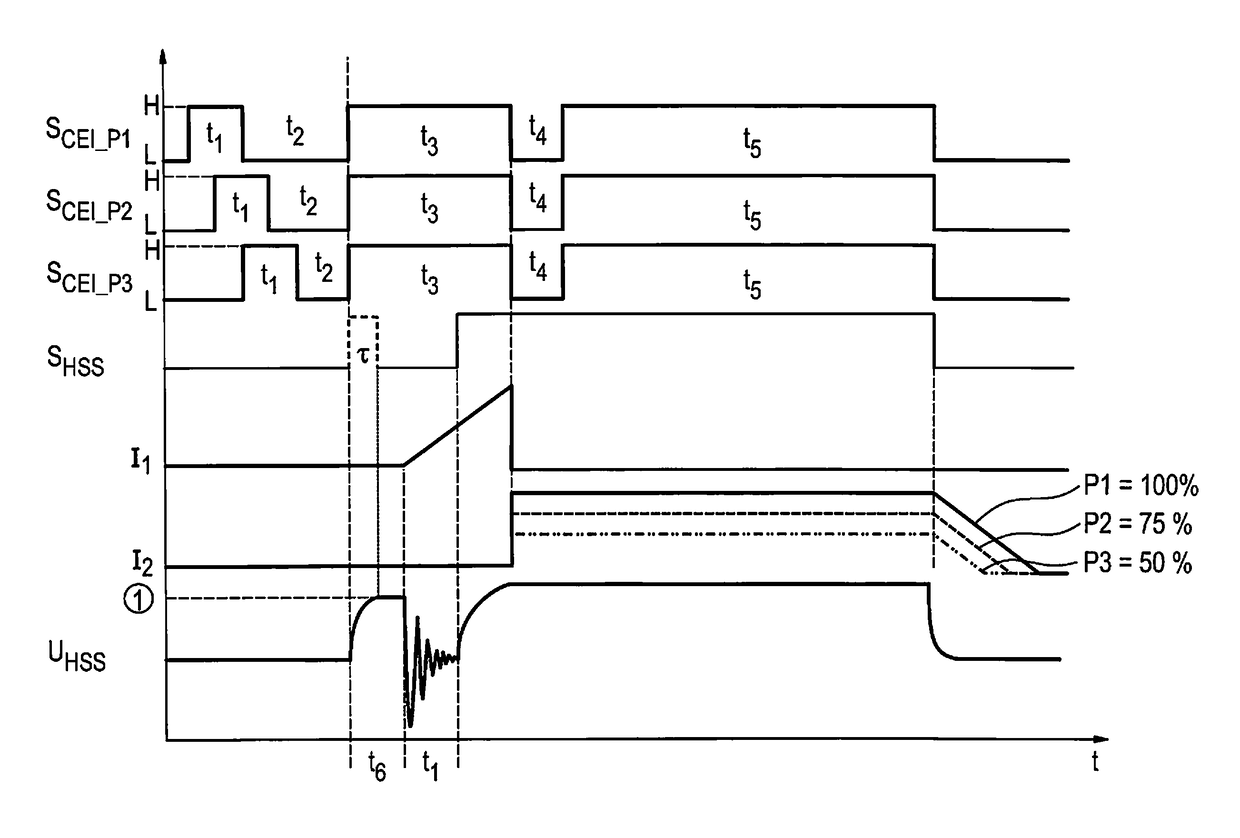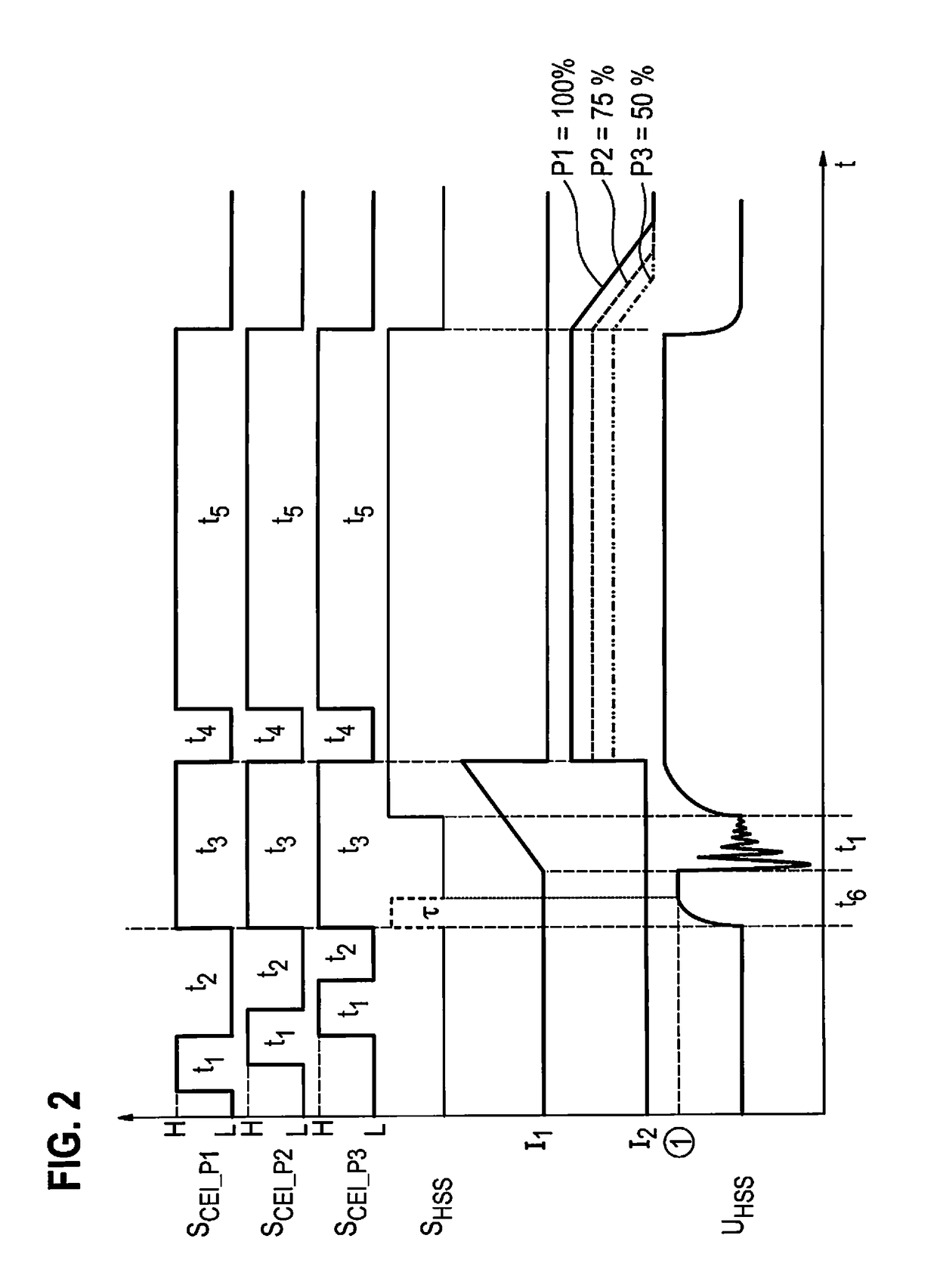Ignition system and method for controlling an ignition system for a spark-ignited internal combustion engine
a technology of internal combustion engine and ignition system, which is applied in the direction of electric control, machines/engines, mechanical apparatus, etc., can solve the problems of no proposals known in the related art for corresponding control, and achieve the effect of being particularly simple circuitwise and being easily evaluabl
- Summary
- Abstract
- Description
- Claims
- Application Information
AI Technical Summary
Benefits of technology
Problems solved by technology
Method used
Image
Examples
Embodiment Construction
[0027]FIG. 1 shows a circuit of an ignition system 1, which includes a step-up transformer 2 as a high voltage generator, the primary side 3 of which may be supplied with electrical power from an electrical energy source 5 via a first switch 30. Secondary side 4 of step-up transformer 2 is supplied with electrical power via an inductive coupling of primary coil 8 and secondary coil 9, and includes a conventional diode 23 for suppressing a switch-on spark, this diode 23 being alternatively replaceable by diode 21. A spark gap 6 is provided in a loop with secondary coil 9 and diode 23 to ground 14, via which the ignition current i2 is intended to ignite the combustible gas mixture. According to the present invention, a boost converter 7 is provided between electrical energy source 5 and secondary side 4 of step-up transformer 2. For this purpose, an inductance 15 is connected via a switch 22 and a diode 16 to a capacitance 10, the one end of which is connected to secondary coil 9 and ...
PUM
 Login to View More
Login to View More Abstract
Description
Claims
Application Information
 Login to View More
Login to View More - R&D
- Intellectual Property
- Life Sciences
- Materials
- Tech Scout
- Unparalleled Data Quality
- Higher Quality Content
- 60% Fewer Hallucinations
Browse by: Latest US Patents, China's latest patents, Technical Efficacy Thesaurus, Application Domain, Technology Topic, Popular Technical Reports.
© 2025 PatSnap. All rights reserved.Legal|Privacy policy|Modern Slavery Act Transparency Statement|Sitemap|About US| Contact US: help@patsnap.com



